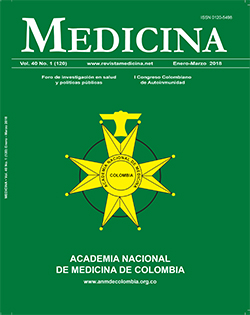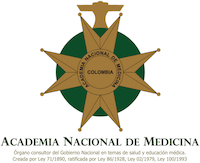RESPUESTA AUTOINMUNE EN INDIVIDUOS INFECTADOS POR EL VIRUS ZIKA (RAIZ)
Palabras clave:
Virus Zika, Genética, Purpura trombocitopenica autoinmune, Encefalitis, Mielitis transversa, Autoinmunidad, Síndrome de Guillain-Barré,Resumen
En el presente artículo se presenta una revisión de los principales resultados del proyecto RAIZ, acrónimo de “Respuesta autoinmune en individuos infectados por el virus Zika”, originado por dos eventos mutuamente relacionados, la asociación entre un virus emergente en el continente, el virus Zika (vZika), y una enfermedad neuromuscular poco prevalente en Colombia, el síndrome de Guillain-Barré. Después de la llegada del virus al país se observó que las zonas donde se reportaban brotes del virus, se documentaba un aumento en los casos de síndrome de Guillain-Barré y otros síndromes neurológicos, que generó un gran interés para entender los mecanismos subyacentes de la infección asociados con autoinmunidad neurológica. Mediante la realización del primer estudio de casos y controles de Zika, Guillain-Barré y otros síndromes neurológicos, se comprobó dicha asociación en Colombia. A lo largo del proyecto, además, se investigaron los principales mecanismos asociados, mediante estudios de seroprevalencia de otras infecciones, inmunológicos y genéticos
Biografía del autor/a
Juan Manuel Anaya, Universidad del Rosario
MD, PhD, Centro de Estudio de Enfermedades Autoinmunes (CREA), Escuela de Medicina y Ciencias de la Salud, Universidad del Rosario. Miembro Correspondiente, Academia Nacional de Medicina, Bogotá, Colombia.
Yhojan Rodríguez, Universidad del Rosario
MD, Centro de Estudio de Enfermedades Autoinmunes (CREA), Escuela de Medicina y Ciencias de la Salud, Universidad del Rosario, Bogotá, Colombia.
Carolina Ramírez Santana, Universidad del Rosario
MSc, PhD, Centro de Estudio de Enfermedades Autoinmunes (CREA), Escuela de Medicina y Ciencias de la Salud, Universidad del Rosario, Bogotá, Colombia.
Diana M. Monsalve, Universidad del Rosario
MSc, PhD, Centro de Estudio de Enfermedades Autoinmunes (CREA), Escuela de Medicina y Ciencias de la Salud, Universidad del Rosario, Bogotá, Colombia.
Daniel Vega, Hospital Universitario Mayor
MD, Unidad de Cuidado Intensivo, Méderi – Hospital Universitario Mayor, Bogotá, Colombia.
Ernesto Ojeda, Hospital Universitario Mayor
MD, Departamento de Neurologia, Méderi – Hospital Universitario Mayor, Bogotá, Colombia.
Mónica Rodríguez-Jiménez, Universidad del Rosario
MD, Centro de Estudio de Enfermedades Autoinmunes (CREA), Escuela de Medicina y Ciencias de la Salud, Universidad del Rosario, Bogotá, Colombia.
Yovana Pacheco, Universidad del Rosario
MSc, PhD, Centro de Estudio de Enfermedades Autoinmunes (CREA), Escuela de Medicina y Ciencias de la Salud, Universidad del Rosario, Bogotá, Colombia.
Nicolas Molano-González, Universidad del Rosario
MSc, Centro de Estudio de Enfermedades Autoinmunes (CREA), Escuela de Medicina Ciencias de la Salud, Universidad del Rosario, Bogotá, Colombia.
Yeni Acosta-Ampudia, Universidad del Rosario
MSc, PhD, Centro de Estudio de Enfermedades Autoinmunes (CREA), Escuela de Medicina y Ciencias de la Salud, Universidad del Rosario, Bogotá, Colombia.
Referencias bibliográficas
2. ICTV. International comittee on taxonomy of viruses. Virus taxonomy. 2014. Release 2015.
3. Duffy M. Chen T.Hancock T. Powers A. Kool J. Lanciotti R. Pretrick M. Zika Virus Outbreak on Yap Island, Federated States of Micronesia. N Engl J Med. 2009;360:2536–43.
4. Lessler J, Chaisson LH, Kucirka LM, et al. Assessing the global threat from Zika virus. Science. 2016 Aug;353(6300):aaf8160.
5. Cao-Lormeau V-M, Blake A, Mons S, Lastère S, Roche C, Vanhomwegen J, et al. Guillain-Barré Syndrome outbreak associated with Zika virus infection in French Polynesia: a case-control study. Lancet. 2016 Apr;387(10027):1531–9.
6. Anaya J-M, Rodríguez Y, Monsalve DM, Vega D, Ojeda E, Gonz Alez-Bravo D, et al. A comprehensive analysis and immunobiology of autoimmune neurological syndromes during the Zika virus outbreak in Cúcuta, Colombia. J Autoimmun. 2016;77:123–38.
7. Karimi O, Goorhuis A, Schinkel J, Codrington J, Vreden SGS, Vermaat JS, et al. Thrombocytopenia and subcutaneous bleedings in a patient with Zika virus infection. Vol. 387, Lancet. England; 2016. p. 939–40.
8. Carteaux G, Maquart M, Bedet A, Contou D, Brugières P, Fourati S, et al. Zika Virus Associated with Meningoencephalitis. N Engl J Med. 2016 Apr;374(16):1595–6.
9. Rodriguez Y, Monsalve D, Acosta-Ampudia Y, Molano-González N, Ramírez-Santana C, Anaya JM. Disautonomia en pacientes con infección por virus Zika. VII Simp Nac y III Congr Latinoam Virol. 2017; DOI: 10.16925/greylit.2097 (enviado a publicación)
10. Pinto-Diaz CA, Rodriguez Y, Monsalve DM, Acosta-Ampudia Y, Molano-Gonzalez N, Anaya J-M, et al. Autoimmunity in Guillain-Barre syndrome associated with Zika virus infection and beyond. Autoimmun Rev. 2017 Apr;16(4):327–34.
11. Chalela JA. Pearls and pitfalls in the intensive care management of Guillain-Barré syndrome. Semin Neurol. 2001;21(4):399–405.
12. Willison HJ, Jacobs BC, van Doorn PA. Guillain-Barre syndrome. Lancet. 2016 Aug;388(10045):717–27.
13. Jasti AK, Selmi C, Sarmiento-Monroy JC, Vega DA, Anaya J-M, Gershwin ME. Guillain-Barre syndrome: causes, immunopathogenic mechanisms and treatment. Expert Rev Clin Immunol. 2016 Nov;12(11):1175–89.
14. Anaya J, Ramirez-Santana C, Salgado-Castaneda I, Chang C, Ansari A, Gershwin M. Zika virus and neurologic autoimmunity: the putative role of gangliosides. BMC Med. 2016;14.
15. Anaya J-M. The autoimmune tautology. A summary of evidence. Joint, bone, spine.2017;84: 251–3.
16. Anaya J-M, Ramirez-Santana C, Alzate MA, Molano-Gonzalez N, Rojas-Villarraga A. The Autoimmune Ecology. Front Immunol. 2016;7:139.
17. Paixao ES, Barreto F, Teixeira M da G, Costa M da CN, Rodrigues LC. History, Epidemiology, and Clinical Manifestations of Zika: A Systematic Review. Am J Public Health. 2016 Apr;106(4):606–12.
18. Mesci P, Macia A, Moore SM, Shiryaev SA, Pinto A, Huang C-T, et al. Blocking Zika virus vertical transmission. Sci Rep. 2018;8(1):1218.
19. Zanluca C, de Noronha L, Duarte Dos Santos CN. Maternal-fetal transmission of the zika virus: An intriguing interplay. Tissue barriers. 2017 Nov;e1402143.
20. Musso D, Nilles EJ, Cao-Lormeau VM. Rapid spread of emerging Zika virus in the Pacific area. Clin Microbiol Infect. 2014;20(10):595–6.
21. Dupont-Rouzeyrol M, O ’connor O, Calvez E, Daures M, John M, Grangeon J-P, et al. Co-infection with Zika and Dengue Viruses in 2 Patients, New Caledonia, 2014. Emerg Infect Dis. 2015;21:381–2.
22. Pyke AT, Daly MT, Cameron JN, Moore PR, Taylor CT, Hewitson GR, et al. Imported zika virus infection from the cook islands into australia, 2014. PLoS Curr. 2014;6:1–7.
23. Wæhre T, Maagard A, Tappe D, Cadar D, Schmidt-Chanasit J. Zika Virus Infection after Travel to Tahiti , December 2013. Emerg Infect Dis. 2014;20(8):8–10.
24. Tognarelli J, Ulloa S, Villagra E, Lagos J, Aguayo C, Fasce R, et al. A report on the outbreak of Zika virus on Easter Island, South Pacific, 2014. Arch Virol. 2016;161(3):665–8.
25. Zanluca C, Melo VC, Mosimann AL, Santos GI, Santos CN, Luz K. First report of autochthonous transmission of Zika virus in Brazil. Mem Inst Oswaldo Cruz. 2015;110(4):569–72.
26. Bukrinsky M. Yeast help identify cytopathic factors of Zika virus. Cell Biosci. 2017;7:12.
27. Acosta-Ampudia Y, Monsalve DM, Rodríguez Y, Gunturiz ML, Ramirez-Santana C, González-Bravo DC, et al. Autoinmunidad Neurológica En Los Tiempos Del Zika. Rev Med. 2016;38(2):187–200.
28. Acosta-Ampudia Y, Monsalve D, León-Ramos C, Anaya JM, Ramírez-González JD. Diagnóstico de la infección por el virus Zika: retos y dificultades. VII Simp Nac y III Congr Latinoam Virol. 2017; DOI: 10.16925/greylit.2097
29. Monsalve DM, Pacheco Y, Acosta-Ampudia Y, Rodriguez Y, Ramirez-Santana C, Anaya J-M. Zika virus and autoimmunity. One-step forward. Autoimmun Rev. 2017 Dec;16(12):1237–45.
30. Mahecha MP, Ojeda E, Vega DA, Sarmiento-Monroy JC, Anaya J-M. Guillain-Barre syndrome in Colombia: where do we stand now? Immunol Res. 2017 Feb;65(1):72–81.
31. Uncini A, González-Bravo DC, Acosta-Ampudia YY, Ojeda EC, Rodríguez Y, Monsalve DM, et al. Clinical and nerve conduction features in Guillain-Barré syndrome associated with Zika virus infection in Cúcuta, Colombia. Eur J Neurol [Internet]. [cited 2017 Dec 21]; Available from: http://onlinelibrary.wiley.com/doi/10.1111/ ene.13552/full/#.WjvHYZQeVss.mendeley
32. Anaya JM, Sun C, Acosta-Ampudia Y, Monsalve DM, Rodríguez Y, Ramírez-Santana C, Nath S. Plausibilidad genética de la infección por el virus del Zika y el síndrome de Guillain-Barré. VII Simp Nac y III Congr Latinoam Virol. 2017; DOI: 10.16925/greylit.2097 (enviado a publicación).
33. Howie BN, Donnelly P, Marchini J. A flexible and accurate genotype imputation method for the next generation of genome-wide association studies. PLoS Genet. 2009 Jun;5(6):e1000529.
Cómo citar
Descargas
Publicado
Número
Sección
Licencia
Copyright
ANM de Colombia
Los autores deben declarar revisión, validación y aprobación para publicación del manuscrito, además de la cesión de los derechos patrimoniales de publicación, mediante un documento que debe ser enviado antes de la aparición del escrito. Puede solicitar el formato a través del correo revistamedicina@anmdecolombia.org.co o descargarlo directamente Documento Garantías y cesión de derechos.docx
Copyright
ANM de Colombia
Authors must state that they reviewed, validated and approved the manuscript's publication. Moreover, they must sign a model release that should be sent.




